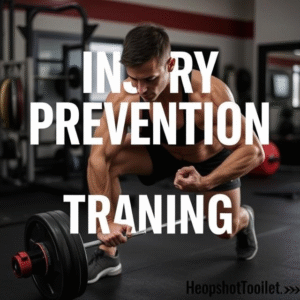
How to train with an injury.
This post is focused on how to train with an injury. This is based on my many years as a competitor and International coach in the martial arts. I have found this to be a very interesting subject for the simple reason that most people will try to keep going by taking pain relief.
When this doesn’t work hopefully they’ll do what I would advise, which is consult your doctor. If you’ve ever had any pain or an ache, that has been irritating you for a while. You should consult your doctor. The answer or solution to your problem can vary. This post is going to talk about a doctors approach v’s a competitors approach.
My post will talk about sport related issues and what I have done to keep my training program on track!
How To Train With An Injury.
If you’ve ever found yourself in this position, I guess you’d do almost anything to be pain free. Now that’s a very common or should I say normal approach. The first thing I’d like to point out is that you should not try to continue training if you’re experiencing severe pain. This is because pain is the way our body lets us know that something is wrong!
Now, when it comes to pain, there’s a few things we should know. We can experience pain at different levels of severity and this is what tells us and what we can and cannot continue to do.
Types Of Pain.
- Headache. (Migraine)
- Muscle. (Soreness)
- Joints.
- Nerves. (Trapped)
- Recovery from an injury.
- Ligaments. (Strained)
This is how to train with an injury.
As you can see there’s quite a few reasons why our body might hurt. Some reasons are simple and straightforward but some are not. Learning how to train with an injury is easy if you’ve got a good idea what’s wrong.
Headaches.
This isn’t really a pain from training but I have put it in my list, to enable me to describe different levels of pain. You’ve woken up and during your breakfast you’ve seen a little flicker in the corner of one of your eyes. If you’ve ever been there, you’ll know it’s the beginning of a migraine. A migraine can be very disruptive and it will play with your taste buds, make your stomach ache and your head will start pounding!
This could last for an hour but I have known some people who have had migraines, that has lasted hours and sometimes days. Now it doesn’t take a genius to tell you that you cannot possibly train through this. To even try would be abusing yourself. Wait it out and try later or better still, give it 24 hours if you can and see how you feel.
Muscle Soreness.
Having sore muscles is one of the popular sources of pain after training. Talking from experience I have had. I can say I have had many students who have suffered with muscle soreness, on a weekly basis. This is referred to as delayed onset of muscle soreness (D.O.M.S) which is what you will feel within 24 – 72 hours after training.
You can train through this, in fact I have found training the best way to get over this type of pain. I would also like to say, muscle soreness can be limited if you train yourself to always perform a cool down routine after your workout.
Image of delayed onset muscle soreness.
Joint Pain.
My first question here would be what kind of joint pain are you feeling? There’s various types of joints in the human body and if for some reason, other than the obvious, you’re experiencing any form of discomfort. You should take notice and action. In my experience other than muscle pain, the next issue is from joint pains. This can be from our knees, elbows, back, hips and shoulders.
Any joint issues should be taken seriously and I would only train with this kind of discomfort, if I’m fully aware of how the pain started. By this I mean did I over reach or over stretch? If you’ve experience any pain for longer than a few days, I would advise you to speak to your doctor.
If you’re are struggling to continue with your daily routine, I would suggest taking Ibuprofen but not Paracetamol. My reasoning here is, Ibuprofen will help with any swelling and Paracetamol helps to relieve pain. Unfortunately if you’ve blocked out the pain, which is the way your body tells you that something’s wrong. You could make the injury worse!
Nerves. (Trapped)
Most people don’t know the difference between muscle or nerve pain. This is a big problem because if you don’t know what you’re feeling, how can you possibly understand how to train with an injury. Especially if don’t know what type of injury you have?
Well let me throw some light on this subject for you. When nerve pain is felt it feels hot, your body would react as if you’d been pricked by a pin. Another way to express your feeling, is to say it feels like fire. Muscle pain feels like a dull ache, it can be quite irritating but it’s bearable. Now that you know the difference between these two types of pain, you can access what you’re feeling with confidence.
A trapped nerve can be awkward to resolve. Nerves can sometimes release themselves but in my experience it will require a little manipulation to release it. Training with this problem will not be possible and training should not commence until you have resolved the problem.
Recovery After An Injury.
Learning how to train with an injury is simple if you know what you’re doing. When you’re recovering from an injury, training can be a part of the rehabilitation program. So training is a good idea to keep the joint moving. In order to avoid creating, for example a frozen shoulder, which can result after a shoulder injury. A friend of mine overstretched his abductor, during his normal stretching routine. This caused a tear, which left him injured for approximately 6 months.
He consulted his doctor which was the sensible thing to do. But kept training to keep try and keep some type of progress. Now if you look at this example and hopefully you’ll take notice that he did the right thing. He sought his doctors advise, which was resting the injured muscle but he was still allowed to train. This was kept to a minimum, so he could still improve his flexibility and also keep improving his stamina. All areas would have suffered if he hadn’t trained for 6 months.
Ligaments. (Strained)
This is a tricky injury to try and train with. Ligaments play a special role in our bodies, they connect bone to bone. They are made of a dense elasticated tissue. Ligaments can be found around our shoulders, elbows, hips, knees and ankles. Even though they are very strong they can be injured by overstretching or by hyper extending the joint. My advice here on how to train with an injury of this type is simple. I would advise R.I.C.E.
- REST.
- ICE.
- COMPRESS.
- ELEVATE.
This is what most doctors or a medically trained personnel would suggest you do and this is common sense.
Conclusion Of How To Train With An Injury.
I believe the only way you can get this right is by listening and understanding your body. During our lifetime we’ll experience different types of pain for various reasons. What I would like you to understand from this post is that not all injuries are the same and they all require a different type of treatment.
If in doubt consult your doctor and heed their advice before you continue any physical activity. I hope this post has given you a good insight into pain and if you have any questions or comments please leave them below.
To good health and decisions.









I have a similar experience as your friend. After several months of Krav Maga training, I felt severe pain in my lower abdomen and had to stop training. For the first month, I didn’t train at all, and then slowly began to do other body parts. I’m feeling pretty good right now, and I believe I’ll continue to train completely soon.
Hi. It sounds like you made the right choices, listen and work with your body and it’ll serve you well.
Hi there, I found your article very thorough straight, forward and informative. I always thought if you have muscle pain from training to wait a few days before diving in again but I guess I was wrong. I learnt something new today.
Overall your post is very engaging, I’m sure your visitors are going to ask you a lot of questions about the information you provided.
In my career, I have had some injuries and in this article, you have made a great job in providing good content and that the most important thing is to listen to the body, I remember when I was about 19 years old and I had some pain in my foot but in my mind, I thought it would heal by itself but no after a year I was going to quit with soccer for the rest of my life after this injury. I hope more people listen to the body and take signals seriously when they occur
Hi Andreas thanks for taking the time to read and comment on my post. We only have one body and we need to learn to work with it not against it.